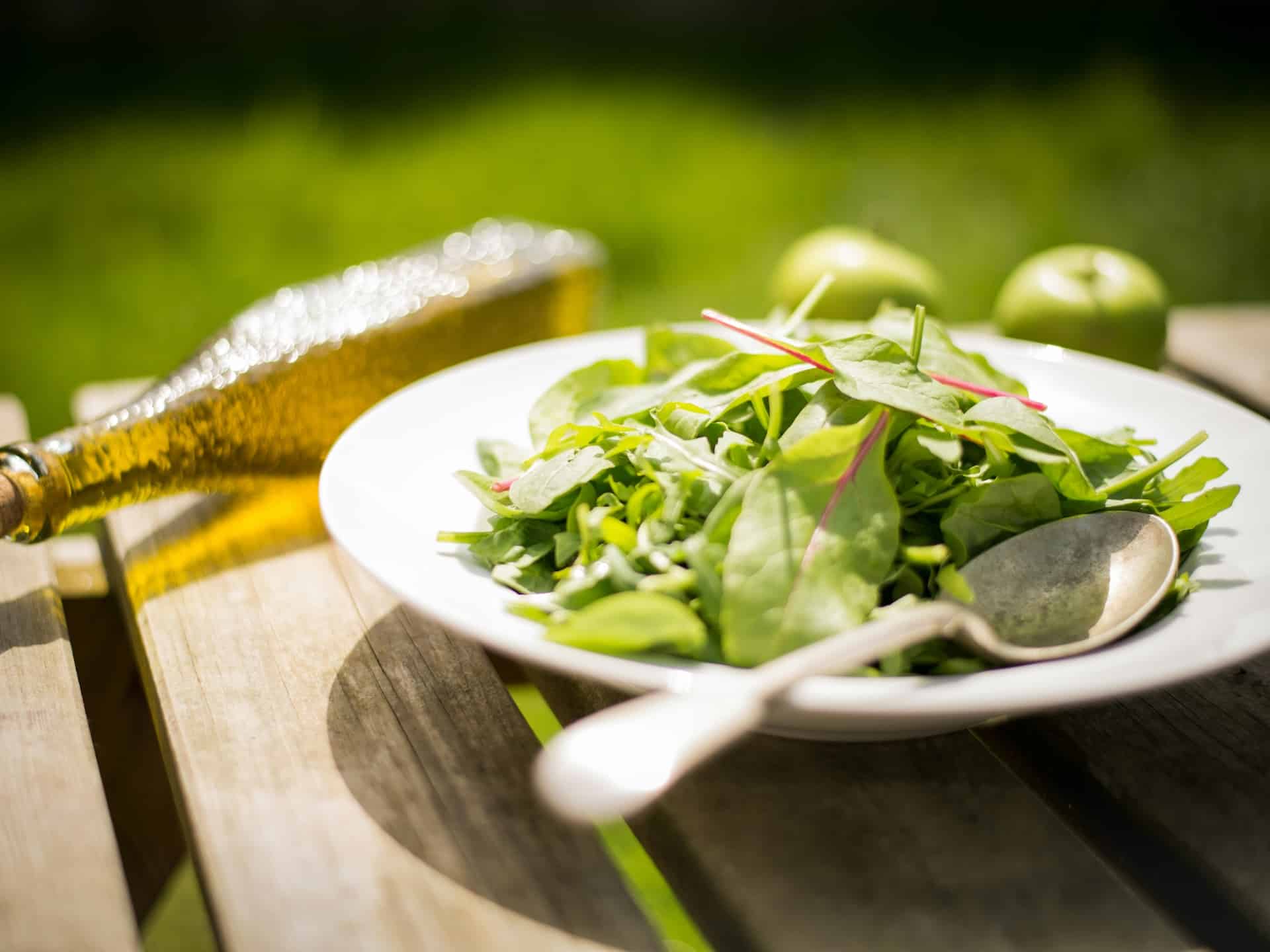
From a flash to this point, intermittent fasting has become not only part of our vocabulary, but also part of our habits. For some, it is a way to more strictly control their intake and thus be able to better control their weight. Others, however, understand it as just another way of eating.
A few years ago, it was presented as the solution to many of the health problems of Western societies and even as the secret to healthy longevity, but the most recent scientific studies are beginning to question whether intermittent fasting is healthy. They even open the door to the possibility that it may cause health problems for those who practice it. Rubén Leal, a dietician-nutritionist specialising in microbiota and the digestive system and member of the Spanish Academy of Nutrition and Dietetics, helps us to resolve these doubts and many more.
What is intermittent fasting?
Intermittent fasting is a dietary approach that involves what is called temporary restriction of intake. That is, for a certain period of time, solid foods are not ingested. The result is that “the body changes its source of energy, moving from glucose and glycogen to fats, once the reserves of the former are exhausted,” explains Leal.
“This process involves the production of ketone bodies which are used as an alternative fuel source. That is, intermittent fasting allows take advantage of the fat stored in the body as energy and spend it,” in the words of the expert.
How to do intermittent fasting
Starting the practice of intermittent fasting requires a series of recommendations:
- Combine this practice with physical activity to boost health and fat burning.
- Maintain a healthy relationship with food. It’s not about restricting food, but rather limiting intake to certain times. Leal sums it up in one sentence: «You have to be at peace with your food!»
- Each subject must evaluate together with their health professional whether intermittent fasting will enhance their well-being and health.
- Be aware of the need for complete nutrient intake during meal windows focusing on healthy, nutrient-dense foods.
- Carry out the process with the help of a dietician-nutritionist specialized in these restrictions to carry it out in an individualized manner.
There are numerous ways to incorporate fasting spaces. “The ideal is to try until you find the one that best fits your schedule and lifestyle. I recommend it advance progressivelyFor example, by extending breakfast time,” says Leal.
Types of intermittent fasting
Once we know what it is and the basic nutritional recommendations, it is time to decide what type of intermittent fasting we want to do. Or in other words, define the time windows in which we can eat.
12 hour intermittent fasting
Also known as 12:12 fasting, this is the gentlest and most adaptable way, and certainly the easiest way to get started. “It involves a 12-hour window each day. For example, eating between 7 a.m. and 7 p.m., then fasting from 7 p.m. to 7 a.m. the next day, with eight hours of sleep in between.”
16:8 hours
This is the most popular format. It is based on eating during an 8-hour window and fasting for the remaining 16 hours of the day. “For example, eating between 12 noon and dinner at 8 pm. From then on, a 16-hour period of no food would begin until 12 noon the following day.”
Fasting in this way is more bearable if you have dinner earlier, around 7 p.m., and have a late breakfast at 12 noon the next day. You can also have dinner later and go straight to lunch the next day, without breakfast.
5:2 days
This form of fasting involves eating normally for 5 days and restricting calorie intake to 500-600 for the other two days. “For example, you could eat normally on Monday, Tuesday, Wednesday, Thursday and Friday. Come the weekend, you would restrict your daily calories to only about 500-600 a day. This plan is not recommended for the uninitiated,” says the dietician-nutritionist.
The austerity of this plan makes it practically incompatible with social life as we know it in Mediterranean societies, with get-togethers that usually include aperitifs, tapas, dinners or lunches with friends or family.
20:4 hours
This involves restricting food intake to a 20-hour window and eating within the remaining 4 hours. “Suitable for highly trained people, as it is based on one intake per day,” explains Leal. In this short window, you have to consume all the calories and nutrients necessary for the day, without binge eating.
24 hours
It involves not eating for 24 hours. “For example, eat normally on Sunday, and fast the entire Monday.”
Eat-Stop-Eat
Or alternate-day fasting, which consists of a complete fast for two non-consecutive days in one week: “For example, eating normally on Mondays, Wednesdays and Fridays, and fasting on Tuesdays and Thursdays,” the expert points out.

How to make fasting compatible with the social agenda
Getting started with intermittent fasting can be a difficult challenge for people with a lot of social lives, or for those with many work events. Leal reminds us that it is still possible, but in these cases you will need to put in extra “willpower and self-control.”
Here are his tips for comparing social life to fasting and coming out on top:
- Schedule fasting days according to your commitments and try to fast during the hours when you spend the most time at home.
- If there is no other option, you can break the fast flexibly by adjusting your schedule and following the healthy eating pattern during your intake windows.
- You can drink calorie-free beverages, such as black coffee, tea, infusions or flavored water.
- Always have healthy snacks on hand in case unexpected events arise.
- Inform family, coworkers, or friends about your fasting schedule. Refusal to share a meal is not interpreted as hostility, but rather as part of a different dietary plan.
- Drink enough water during fasting periods to hydrate and help reduce hunger.
Does intermittent fasting have benefits?
Leal points out that «it is important to be clear that research is still being conducted regarding the negative effects of intermittent fasting. Especially with regard to the Cardiovascular health. Most studies to date have been short-term. Additional research is needed to understand the long-term effects of this dietary approach.”
As for the benefits, “proven in numerous studies and in professional practice,” says the expert, who seems to
- Weight loss. Without a doubt, the most popular effect, which is greatly enhanced if combined with physical exercise.
- Insulin and blood sugar control. Improving insulin sensitivity and reducing the risk of developing type 2 diabetes.
- Increased autophagyThis process of cell replacement involves the body replacing and recycling damaged cells and proteins, thereby promoting cellular health and well-being. This natural process has led some experimental studies to claim that it could prevent neurodegenerative diseases, strengthen the immune system and promote longevity, although research is still ongoing in humans.
- Inflammatory reductionThis situation could help prevent the risk of chronic diseases linked to chronic low-grade inflammation.
Good results have also been obtained in some human studies in relation to:
- Increased production of human growth hormone. This hormone, also known as somatropin, is essential for cell regeneration, bone health and muscle growth.
- Improved mental clarity.
- Increase in the concentration and productivity.
- Euphoria. Improved mood due to the feeling of success perceived upon completion.
- Higher energy levels.
Dangers or negative consequences
The dietician-nutritionist insists that helping does not have to be the solution to all the problems. “It may be healthy for some, but not for others, since many of the changes that occur can affect mood, mental health and nutritional status.”
Among the negative consequences, Leal highlights the following:
- Hunger
- Halitosis
- Irritability
- Stress
- Challenging for people with a lot of social life.
- Dehydration and electrolyte imbalance
- Headaches and dizziness
- Hormonal changes
- Malnutrition
Intermittent fasting is not recommended for people who suffer or have suffered from eating disorders, nor for people who are prone to stress and anxiety.
It is expressly discouraged in the following cases:
- people who are underweight or have lost weight unintentionally
- pregnant and breastfeeding women
- Children and adolescents
- type 1 diabetics
- athletes or sportspeople with specific nutritional needs
Foods that don’t break intermittent fasting
To maintain the fasting state, it is essential that, if you eat foods outside the intake windows, without calories or very low in calories:
- Low-calorie drinks, such as water and carbonated water.
- Very low-calorie drinks, such as infusions (without sugar), mate, black coffee.
- Flavoured waters with natural ingredients, such as cucumber, lemon drops…
- Bone or vegetable broth that does not exceed 50 kilocalories.
What to take to break it?
To break intermittent fasting, it is best to consume foods with high nutritional value:
- vegetables and greens
- fresh fruits
- blue and white fish
- poultry
- whole eggs
- Legumes and tofu
- Whole grains or cereals (pasta and brown rice, quinoa, oats)
- healthy fats, such as extra virgin olive oil
- nuts
- seeds
- Dairy products or derivatives (skimmed yogurt, low-fat cheese, kefir, etc.)
- Calcium-enriched vegetable drinks
The ALDI Council
Have you started intermittent fasting and feel hungry when you get to the office? Always have a bottle of water on hand, to which you can add a few slices of lemon for flavor without breaking your fast. But above all, do not make decisions about your diet without first consulting your dietician-nutritionist.

Ruben Leal. Senior technician in dietetics, Graduate in Human Nutrition and Dietetics, with a postgraduate degree in Microbiota. Currently finishing a postgraduate degree in Clinical Nutrition and Public Health from the University of Barcelona. He has completed different training courses in sports nutrition, tools for fat loss and ergogenic aids for sports performance and health. He is a member of the Official College of Dietitians and Nutritionists of Catalonia. He is a member of the Spanish Academy of Nutrition and Dietetics. He has more than 5 years of experience working independently. Currently, he works with patients from different parts of the world (Spain, the United States and Switzerland), mainly and exhaustively, on nutritional and dietary treatment for patients with overweight and obesity.








Mygreat learning Very well presented. Every quote was awesome and thanks for sharing the content. Keep sharing and keep motivating others.